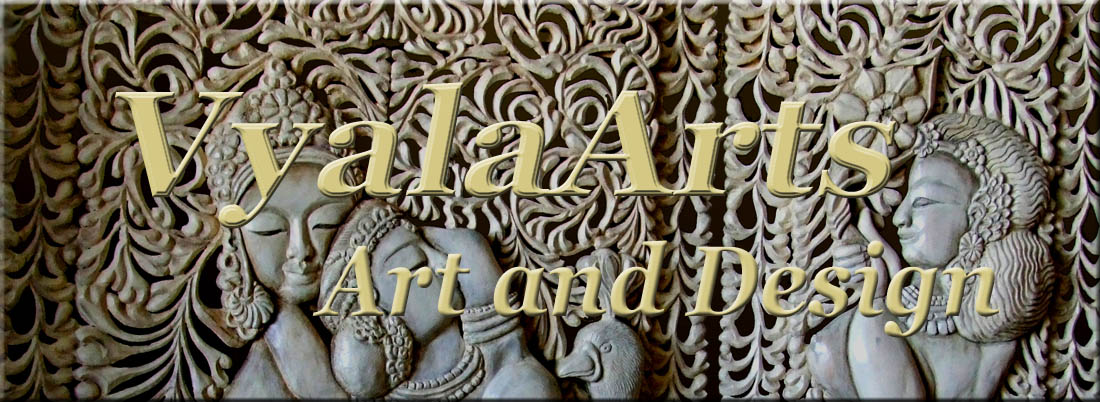The Path of the Tantra...
As already mentioned before the bas-relief consists of 3 large panels. Each of these panels could be mounted on a wall for itself after removing simply the brass hinges.
The reverse sides of the panels have been processed neat and clean - as you can see in the image below - so that you could even place the middle panel into open space (securing it for a stand-alone of course.)
The image below shows a unique feature on the reverse side of the panel:
the foot of the sculpture has not been worked as a bas-relief but as full sculpture. For this the ornament level had to be opened up.
The following images show more details. The figure below is a so-called "Apsara", which plays a significant role in the Indian mythology as well as in other Asian countries. In Hindu as well as Buddhist mythology these female characters are half human and half devine and live as female spirits of the clouds and waters.
"In Indian religions, Apsaras are beautiful, supernatural female beings. They are youthful and elegant, and superb in the art of dancing. They are often wives of the Gandharvas, the court musicians of Indra. They dance to the music made by the Gandharvas, usually in the palaces of the gods, entertain and sometimes seduce gods and men. As ethereal beings who inhabit the skies, and are often depicted taking flight, or at service of a god, they may be compared to angels." (Wikipedia)
In the mythology of the Khmer (Cambodia) the apsaras had a special value as celestial dancers. On the huge temple compound of Angkor Wat you can still see and admire up to 2000 ! sculptures of these temple dancers all carved in stone.
The portrayal of the apsara as more or less erotic dancer should be reminiscent of the displays on the temple compound in Khajuraho in India. There the Tantric path is considered to be the most beautiful and challenging spiritual path to the inner self and is represented by hundreds of erotic sculptures.
"Tantra is that Asian body of beliefs and practices which, working from the principle that the universe we experience is nothing other than the concrete manifestation of the divine energy of the godhead that creates and maintains that universe, seeks to ritually appropriate and channel that energy, within the human microcosm, in creative and emancipatory ways." (Wikipedia)Taking the path of the Tantra means to open the borders of the imprisoned self towards the world through intimate encounter with the different. Tantra teaching says that the sexuality is only a means of mind-expanding. The background is religious: Shiva, Vishnu and Brahma create with their Shaktis (the concept or personification of divine feminine creative power) the world.
~~~
.
.
.































